Client onboarding is the process of kicking off, welcoming clients and discussing plans for your new project. A smooth client onboarding can help build solid communication, reassure client expectations and build a major stepping stone toward retention and long-term business relationships. This is an opportunity to make a good first impression and start the project by addressing questions and defining best practices ahead of time. Ideally, you and the client want to feel like this will be a good partnership, and the project is poised to be successful.
Why it’s important to create a client onboarding checklist
One way to streamline the client onboarding process is to standardize it with a checklist. By following a checklist, you can make the process consistent across clients. It will also demonstrate that you are organized and help define your brand and style of communication. Depending on the client, a checklist may be longer or shorter, but this 10-part client onboarding checklist can serve as a starting point for your future projects.
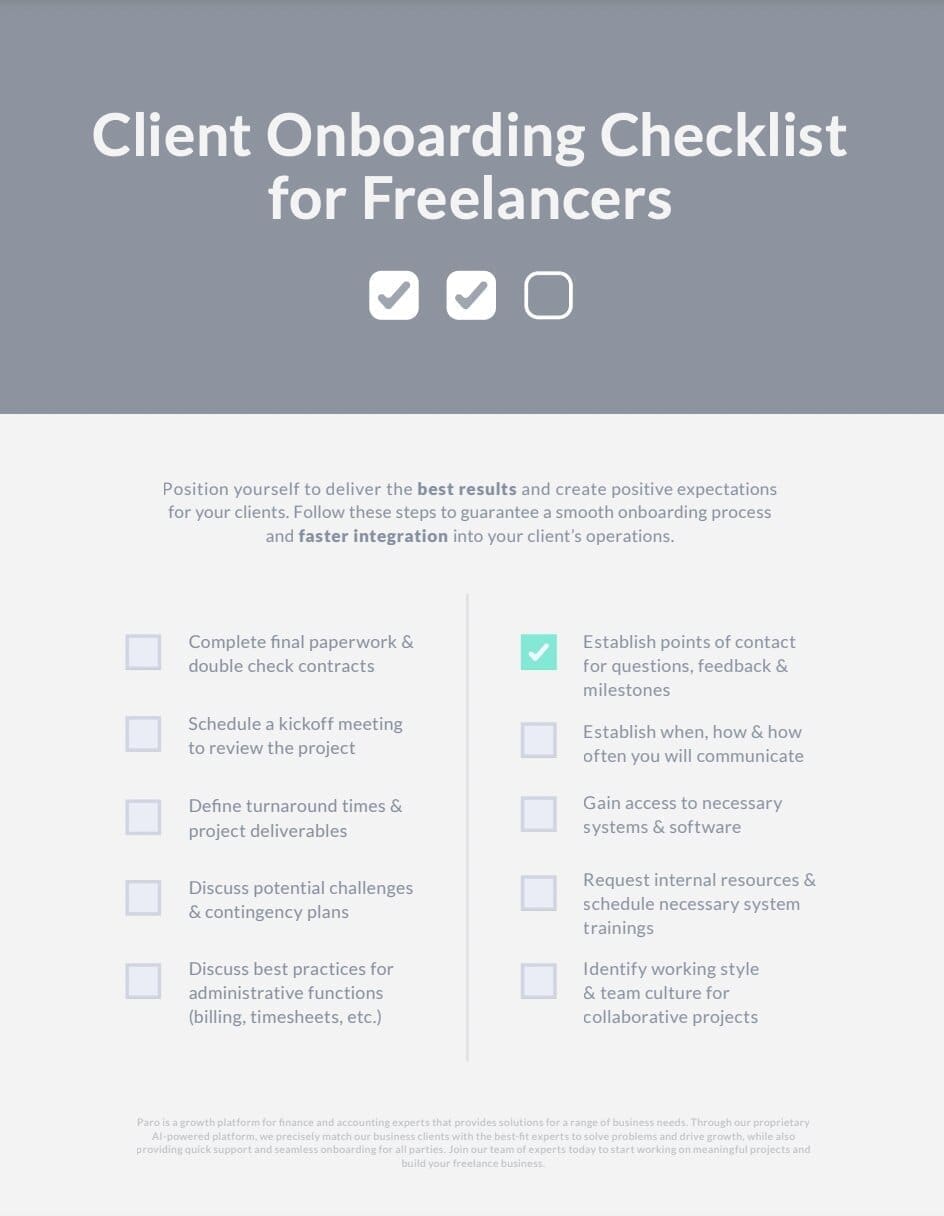
Ten steps to take before starting your next freelance project
Review important project details
Don’t wait until there’s a hiccup to discuss project details. Project kickoff—and pre-kickoff—are the best time to make sure that there are no ambiguities or questions before diving into the project.
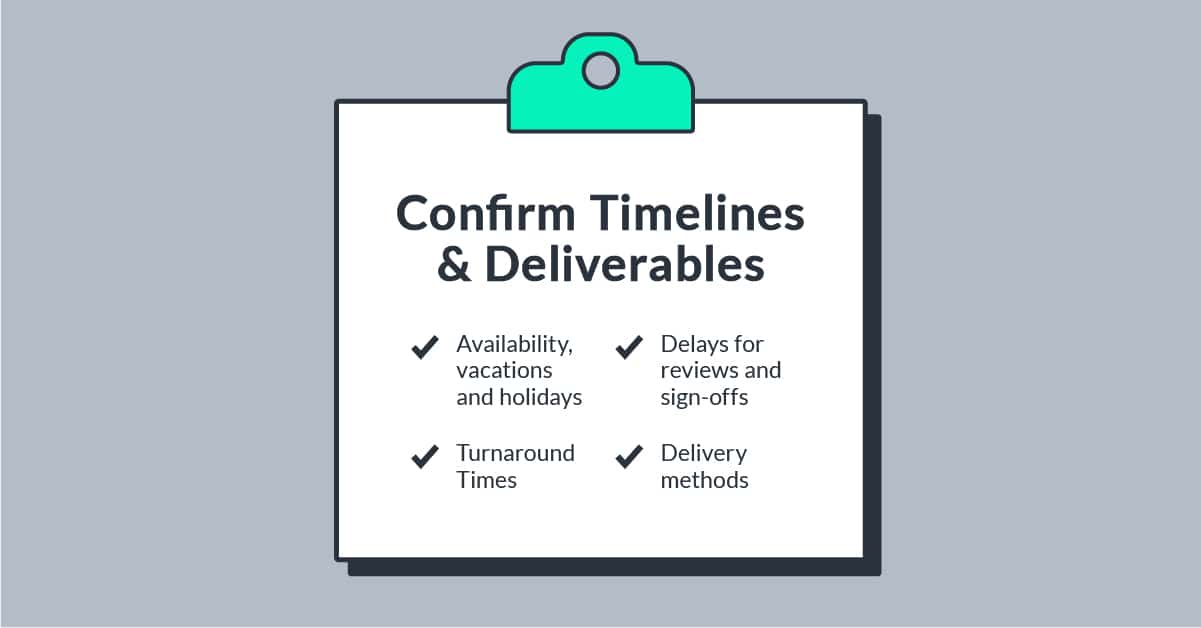
1. Complete final paperwork and review contracts: Confirm your employment contract has the correct rate you’ll be charging and the correct billing details before the project begins. Both parties will need to sign a copy and potentially a non-disclosure agreement (NDA). If you have any questions on the language, be sure to get these answers prior to the project’s start. Remember to keep signed copies of these documents for your records.
2. Set up a kick-off meeting: Discuss the client’s availability for a kick-off meeting. This will enable you to meet one another once again and speak about project details—including your statement of work. Refresh your memories and move forward by addressing unknowns and project-relevant documents to get you more well-acquainted.
3. Discuss review processes, turnaround times and deliverable methods: Talk about project timelines and any dates or processes that should be factored into your deadlines, including upcoming vacations or additional approvers who need extra review time. Some projects may require legal sign-offs, as well. Once you’re clear about timelines, you may also clarify delivery methods, such as by email or an internal company platform.
4. Identify potential project roadblocks and contingency plans: Make sure to have a process in place for any possible concerns regarding the project’s timing and deliverables. Getting these concerns out in the open at the start can mitigate project risks down the line and set better expectations for your client. Potential roadblocks could include a sudden resource issue, a budgetary change or major shift in the scope of the project. Your client should know beforehand about any potential risks you foresee to the project.
5. Discuss administrative functions: Talk about billing and payment procedures for the project. Be sure your payment paperwork has been completed, and find out who the contact is for questions and signatures. Ask about the cadence for submitting timesheets and to whom. And finally, complete any paperwork that your client may need for tax-related purposes.
Build a communication strategy
Communication is an essential part of managing client expectations and setting the stage for a more meaningful partnership. Before starting a project, develop a communication plan that demonstrates your commitment to solve your client’s pain points and achieving their desired outcomes.
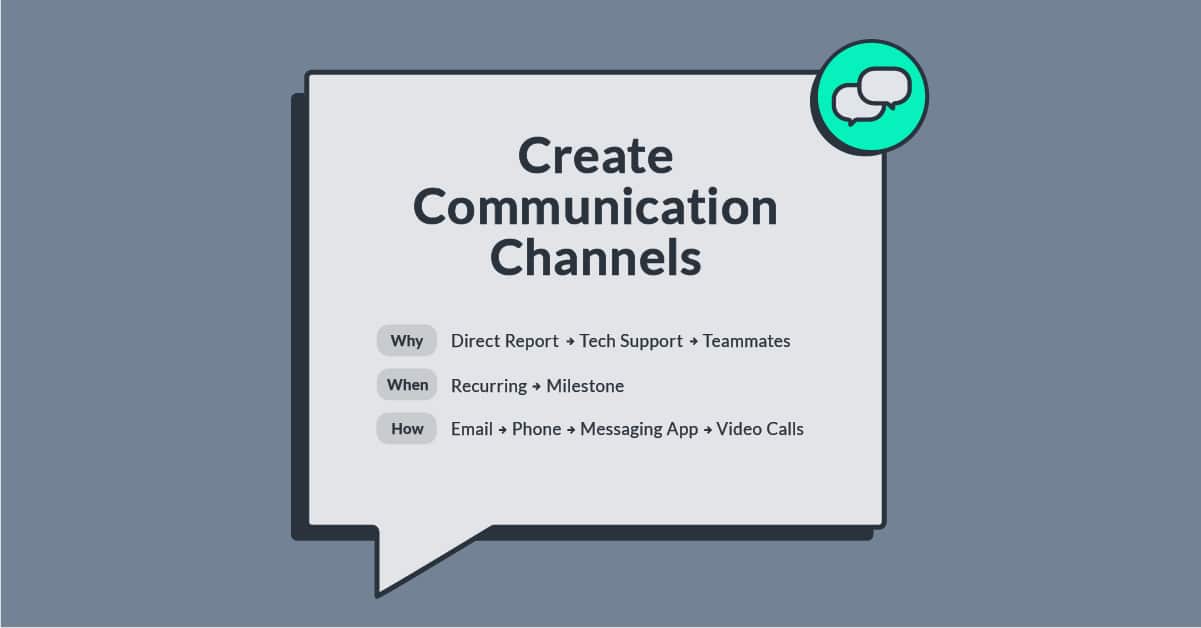
6. Establish points of contact: Confirm who will be your points of contact for questions, including project details, guidance and feedback. Who will you report to directly, and will you be working as one or within a larger team? Ask for their contact information immediately to introduce yourself, if you haven’t already.
7. Identify communication cadence and methods: Inquire about the project meetings you should attend, whether it’s team touch-bases, one-on-ones or meetings with stakeholders. Will the project require recurring meetings each week? Or, will the project only require meetings at specific milestones? This will provide you with more context as an external part of the team and give you an opportunity to meet other teammates or acknowledge project accomplishments and roadblocks.
Inquire about communication preferences during client onboarding, as well. Maybe it’s a meeting culture that utilizes video, phone calls and in-person communications, or there’s a lot of communicating via instant messaging or emails. Adapting to everyone’s preference can help with productivity and, most importantly, building relationships.
Join the client’s tech stack
Depending on the type of service that you offer, you may need to integrate yourself into a client’s tech stack. A tech stack can include simple software that is standard for your industry, or it can be a proprietary system built and customized for the client. Knowing or learning quickly how to process, send, retrieve and build out information or deliverables in these programs or platforms can differentiate you as a freelancer.
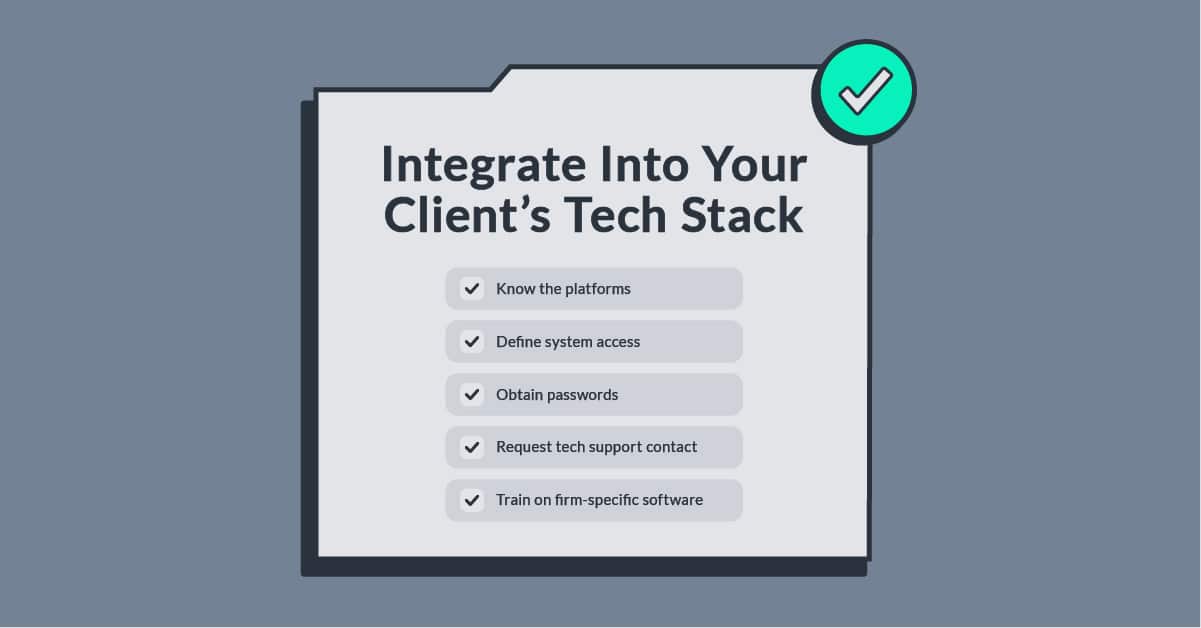
8. Gain access to necessary software: Discuss what types of internal communication platforms (e.g., Slack), work management software or VPN/remote access that you’ll need to get set up. You may need client-provided passwords to access these systems, and the client may have specific security best practices for working with external and remote freelancers. Ask about security procedures, such as two-factor authentication. Clarify whether personal emails are allowed on the client’s email system or if access to email and instant messaging is available on your personal phone
For projects with more sophisticated software or client-specific platforms, identify the client’s best internal contact for tech troubleshooting, and learn how to reach that person.
9. Request any necessary system training: In addition to client best practices and guidelines, there may be necessary training for firm-specific software and workflow processes, as well as shared documents or drives. Asking for this immediately can help prevent delays and show your enthusiasm for integrating quickly.
Foster collaboration and belonging
When working remotely, it’s easy to miss the social and collaborative aspects of working full-time with an in-house team. But even as a freelancer, there are ways to make yourself feel more like part of a team when larger, collaborative projects knock at your door.
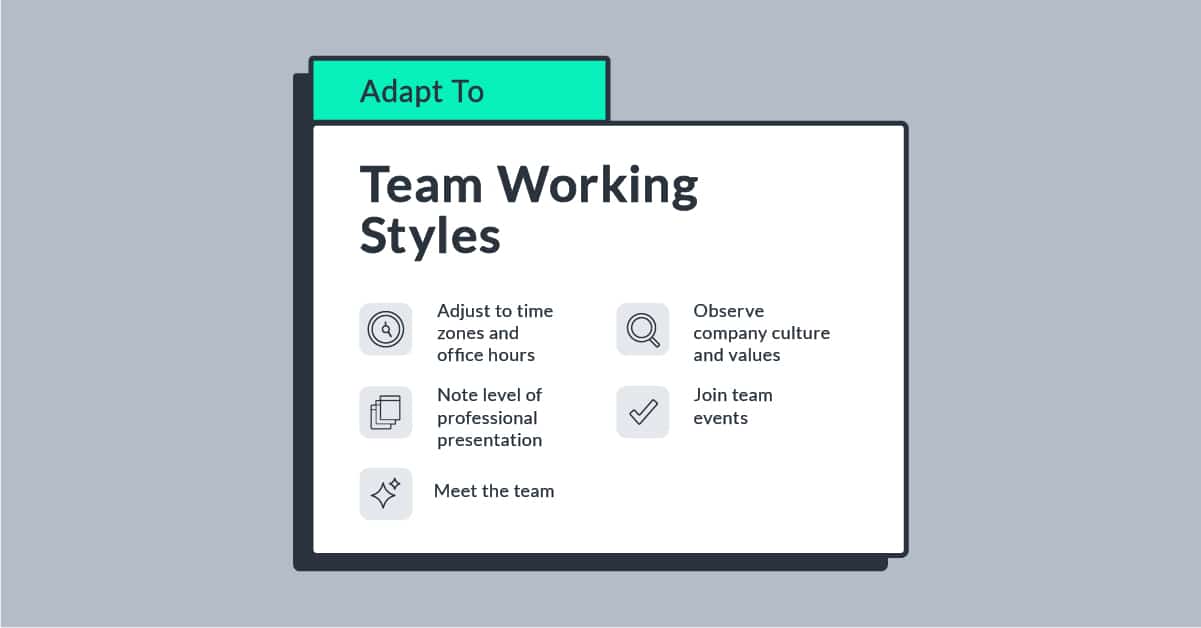
10. Identify the team’s working style and culture: Determine the hours you are expected to be available. If you are working remotely from a different time zone, then you may be required to check in or communicate outside of your regular business hours.
Observe the culture of the team, from their professional presentation in virtual meetings to how they prefer to socialize. Some clients may invite you to team events as you engage in long-term projects. If you crave this aspect of the workspace, create a rapport with your client and their team by getting to know them on a human level and showing an appreciation and interest in their goals and knowledge. This will vary by project, however, as some clients may be more inclusive than others.
Position your projects for success
As you build your client base, you’ll make adaptations to your checklist based on unique client and team needs. Starting with a basic client onboarding checklist each time makes the transition easier, serves as an opportunity to build client relationships and enhances overall communication.
Want more support with finding and working with clients? Streamline project kickoffs and client onboarding with a growth platform that supports fractional finance and accounting experts through every stage of their projects, from pitching to onboarding to completion. Apply to become an expert with Paro and join an elite network of remote professionals that find meaningful projects through AI-driven matching with business clients across the country.






